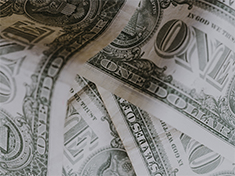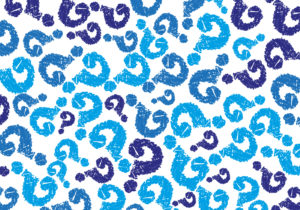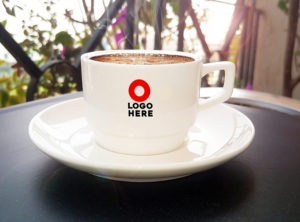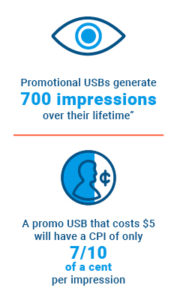Promo Products Are Investments. How to Measure the Return?
 “You have to spend money to make money.”
“You have to spend money to make money.”
It’s a cliche, but every business owner knows it’s true. You need to offer value to get customers, and creating value costs money. Whether it’s building new retail locations or manufacturing fresh inventory, succeeding in business means you’ll have to invest funds now in the belief that it will pay off down the line.
Smart business owners know that marketing and advertising can also be thought of as investments that return profit over time just like more traditional investments. TV commercials and print ads increase awareness of your company and, if done well, build goodwill for your brand. More awareness and positive brand feeling translate into higher sales. Isolating that relationship can help you find a mathematical return on your marketing and advertising investment.
 Finding that return for promotional products can be a little trickier, though. How can you measure the effectiveness of things like tote bags or Custom USB drives that are given away to potential customers and never seen again? It’s an important question, because promotional merchandise is one of the most efficient marketing tools available to your company, and you won’t get all the advantages until you’re able to reliably measure the return.
Finding that return for promotional products can be a little trickier, though. How can you measure the effectiveness of things like tote bags or Custom USB drives that are given away to potential customers and never seen again? It’s an important question, because promotional merchandise is one of the most efficient marketing tools available to your company, and you won’t get all the advantages until you’re able to reliably measure the return.
Read on to learn some ways you can find your promotional marketing products’ effectiveness and start measuring their return for your business.
Direct Response Can Give Hard Numbers
You’re probably familiar with direct response marketing from the credit card offers you get in the mail — companies send a message or offer with a unique code or URL you can use when you contact the business. All the company has to do is measure how many leads or sales they get through the direct mail by looking at how many people used the unique code or URL.
Figuring out a return on promotional products can work the same way: You print a special URL or code on the items, letting you measure how many people come directly to you through the promotional merchandise.
This method isn’t always practical, however. Not every business lends itself to direct response advertising, and it can be a fairly blunt instrument when measuring the total effect of promotional products.
 To see why, imagine someone who saw one of your promotional items out in the wild — perhaps a friend was wearing a shirt with your logo, or they drank out of a mug branded with your tagline. Your company might stick in their mind just a little, and the next time they’re interested in buying what you’re selling, that piece of promotional merchandise might be what makes them think of you first.
To see why, imagine someone who saw one of your promotional items out in the wild — perhaps a friend was wearing a shirt with your logo, or they drank out of a mug branded with your tagline. Your company might stick in their mind just a little, and the next time they’re interested in buying what you’re selling, that piece of promotional merchandise might be what makes them think of you first.
This effect isn’t as easy to measure as a direct response is, but it is real and powerful, and it can help your business grow. So how else can you look at the effectiveness of your promotional items?
Impressions Leave a Mark
One of the big reasons promotional merchandise can be so effective as a marketing tool is that the pieces spend a lot of time being used and seen. In fact, promotional products are the only form of advertising that people WANT to receive. While they’re out in the world, they’re working for you, generating brand impressions, or instances where a potential customer sees your company’s name or brand on the item.
Impressions are valuable to your company because they build awareness and strengthen your brand, both of which can translate to stronger sales and increased market share.
But how do you measure something like impressions? Custom USB drives can’t log every eyeball that sees its branding, after all. Instead, you have to do a little research around how items are used and how often.
Fortunately, professional associations like the Advertising Specialist Institute (ASI), do a lot of the legwork for you, conducting consumer surveys to determine how often people use their promotional products in public and how long they hold on to them.
Using Custom USB drives as an example, ASI found in its 2019 Ad Impressions Study that:

- 43% of consumers keep a promo USB drive for 2 years or longer
- On average, promo USBs are kept 13 months
- 58% of consumers own promotional USBs
- Nearly half (47%) would give away the promo USB drive if they didn’t want it

Working off those numbers, they found that
Promotional custom USBs generate 700 impressions over their lifetime
and
A promo USB that costs $5 will have a CPI of only 7/10 of a cent per impression
Now, the value of an impression will be different from business to business and campaign to campaign, so you’ll have to do some work on your end to figure out the true return on promotional items. But some some more numbers from a 2017 study by the Promotional Products Association International can help show what those impressions accomplish:

- 89% of consumers received a promotional product in the last six months
- 79% researched the brand
- 83% were more likely to do business with the brand
- 82% had a more favorable impression of the brand
The right kind of promotional merchandise will work for you for months or years, building awareness of your company and strengthening your brand with your audience. Not bad, right? It gets even better, though, because those impressions do have a value that you can find with the right data.
TLDR? Download the Infographic!

Infographic: Promo Products Are Investments. How to Measure the Return?
Return on Impression: How Your Investment Pays Off
If you follow the advice above, you can get an idea of how many impressions your promotional merchandise will create, but how can you get from there to predicting and measuring the financial return on those impressions?
Calculating ROI is an inexact science, and the method will vary from business to business. At a high level, though, you should think of it as an A/B test: How much more revenue will you generate with the promotional items than you would without them?
When you’re thinking about how to measure this, don’t forget to consider and factor out variables like seasonal fluctuations and simultaneous marketing efforts that might make it look like your promotional items are more or less effective than they really are.
Remember, too, that the effectiveness of promotional items is tied to more than what they are and how much they cost. Who you give the products to can be just as important. USB drives given away at a trade show might be very effective — after all, you’re giving them to people who are very likely to be your target customers — while giving shirts away at a street corner might be inefficient. You’ll still get impressions, but those impressions aren’t as valuable if they aren’t with people who are likely to spend money at your business.
If you’re careful doing this research, though, you can arrive at a rough idea of how much each impression is worth to you in future sales. With that data, you can confidently plan spending around promotional products and measure how well that spending performs for you. Just remember to regularly check your numbers to make sure your underlying assumptions are right — changes in the market or in your audience could alter how effective your marketing is, meaning you’ll have to reevaluate your strategy and spend.
In Conclusion
Whenever you spend money on your business, you should have a good idea of how that spending will help you in the long run. While the expected return might be clear with something like building a factory or hiring a new salesperson, the return on marketing and advertising can be a little trickier to suss out.
We hope this guide has helped you get an idea of how to solve that problem with promotional products. With the right marketing plan in place, promotional items can be some of the most efficient, long-lasting ways you can generate impressions and build your brand. And if you’re ready to start getting those benefits for yourself, check out what CustomUSB can do for your and your promotional products.